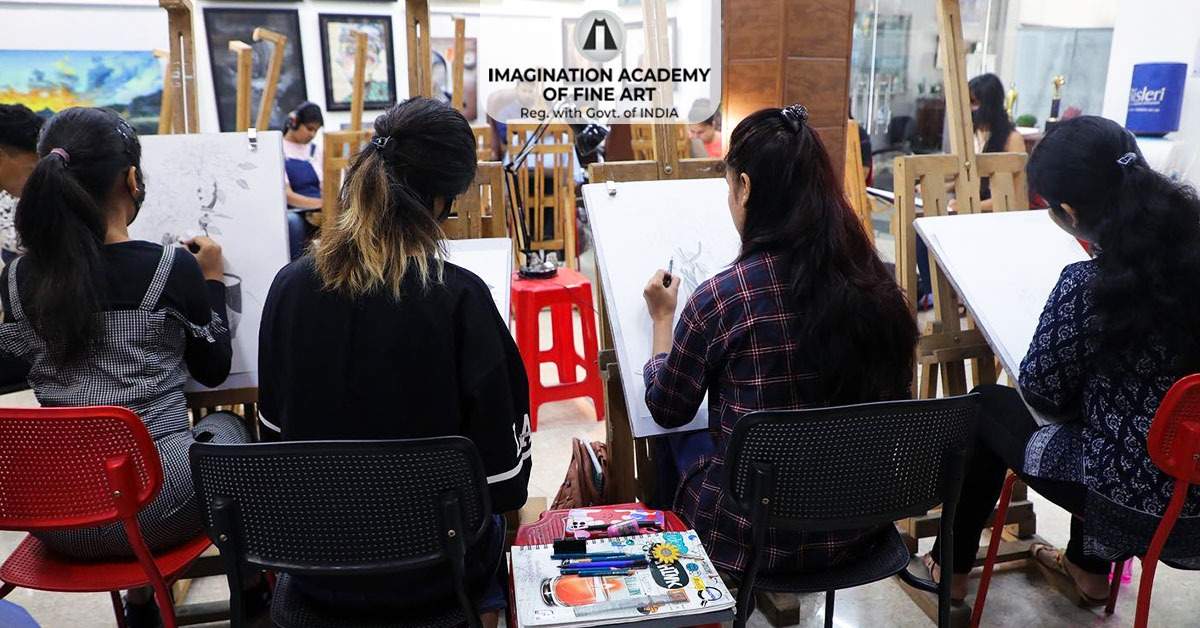Becoming a highly skilled sketching artist is a dream for many but only a few strive hard to gain excellence in that dream. The most appealing thing about sketching is its mobility and convenience of use. You don’t need much to start sketching; a simple pencil and paper will do the trick. Besides, you can always take sketching classes in Dehradun to strengthen your skills.
To ace your sketching skills, it is crucial for everyone (especially beginners) to practice regularly. Thus, today, we share some efficient sketching strategies that can help you become experts in no time. So, with no further delay, let us go through each and every trick one by one!
Get All of the Required Tools
Sketching, in principle, involves simply a pen, some paper, and your imagination.
However, as you begin to take sketching seriously, you must choose which tool is best for you and comprehend the significance of different pencils.
But before we explain the significance of different pencils, let’s look at the four levels of hardness of the pencil.
The degree of hardness of the pencil is frequently stated on it, especially if it is created exclusively for sketching.
If you see a pencil with the letter B printed on it, it signifies that it is black. These pencils are often gentle and suitable for youngsters.
If you see the letter H printed on the pencil, it indicates it is hard, and if you see the letter F printed on the pencil, it means it is firm. These pencils are ideal for someone who has a lot of sketching expertise and is at ease with them.
The last hardness degree is HB, which stands for “hard black” and denotes a medium hardness degree.
Sometimes, a number may also be applied to the letters B, H, HB, and F. These numbers will make it easy for you to choose the color intensity of the pencil or the degree of hardness. Say you had to choose between a soft pencil with the numbers 5 H or 10 H written on it. If you desire a higher degree of hardness, 10H is the way to go.
If you need to produce technical drawings or sketches, we recommend using hard pencils such as H, 2H, and 6H. If you wish to express yourself more creatively, soft pencils ranging from 2B to 8B are your best choice.
Aside from selecting appropriate pencils, you’ll also need to purchase a sketchbook for you. We prefer hardback sketchbooks to paperbacks since hardcovers are suitable for both indoor and outdoor use and will come in handy if you need to sketch or draw something.
Begin with Small Steps
Can’t draw straight lines or circles accurately? No worries.
Sketching, especially for beginners, is all about experimenting and creating as many mistakes as possible. You might begin by attempting to draw a short sketch or you can draw straight lines, circles, squares, triangles, or other geometric forms for a few minutes to warm up your hand.
The next step is to decide the topic for your sketch. Is it going to be a real model (a person or an object) or an image? Once you’ve decided on the topic for your sketching, you’ll need to figure out where the light is coming from. Based on where the dominant light source is coming from, you’ll be able to prepare your sketching ahead of time.
As a general rule, the parts of the sketch that face the light source are always lighter than the parts of the sketch that are more in the shadow. So, you’ll need to make those parts more dramatic and contrast them with the lighter parts.
Leave Your Perfectionism at The Door
When you are a novice, it is critical to focus on the fundamental forms rather than all the intricacies or worrying about whether the lines are straight.
Detail should be the last thing on your mind at this point. So, what you should do is practice drawing free-flowing lines with a relaxed hand. To keep your hand from tiring, draw the lines as freely and gently as possible.
Avoid Smudging
Smudging may undo all of your hard work, especially if you want a clean-looking outcome.
It’s annoying, but it happens all the time, especially when you’re shading.
So, how can this problem be eliminated, or at least minimized?
One solution is to lay a piece of paper below your hand to avoid smearing the other areas covered by your palm. The second solution is to begin shading from the left to the right if you are right-handed, and vice versa if you are left-handed.
Always Keep The 70/30 Rule in Mind
Have you heard the phrase “less is more”? This is particularly true when it comes to sketching.
To achieve the aim of moving the major attention to a certain region of your sketching, fill 30% of the area with details and utilize the remaining 70% as filler.
That doesn’t imply you should throw away 70% of your sketch. Instead, use that 70% as effectively as possible to guide the audience to the major subject of your sketching. The importance of simplicity in sketching artwork is equal to that of simplicity in design.
The Wider the Range of Lines, The Better
Remember when we spoke about picking the proper pencil?
That was a method of assisting you in understanding the many types of pencils and their various uses. However, it is not a crime to use numerous pencils of varying hardness or softness.
Now you may be wondering why is it vital to switch the range of your lines. Well, this trick will make your sketch appear more vibrant and aesthetically appealing.
Symmetry Isn’t Always Visually Appealing
Unless you’re already a professional, you shouldn’t be overly concerned with getting your sketches as symmetrical as possible.
At times, symmetrical sketches may appear monotonous or repetitive. To avoid this, consider making a few tiny modifications to make the artwork more asymmetrical.
Last Thoughts
Even if you believe you can just draw stick figures and have no ability for drawing or sketching, we guarantee you that you are far better than you realize.
If you keep practicing, try new drawing approaches & sketching techniques, and follow step-by-step directions, you will quickly see that you are becoming better with each day.
Moreover, a daily 30-minute drawing of rough sketches with a dark pencil can help you kick-start your sketching career and enhance it to a pro-artist level.




